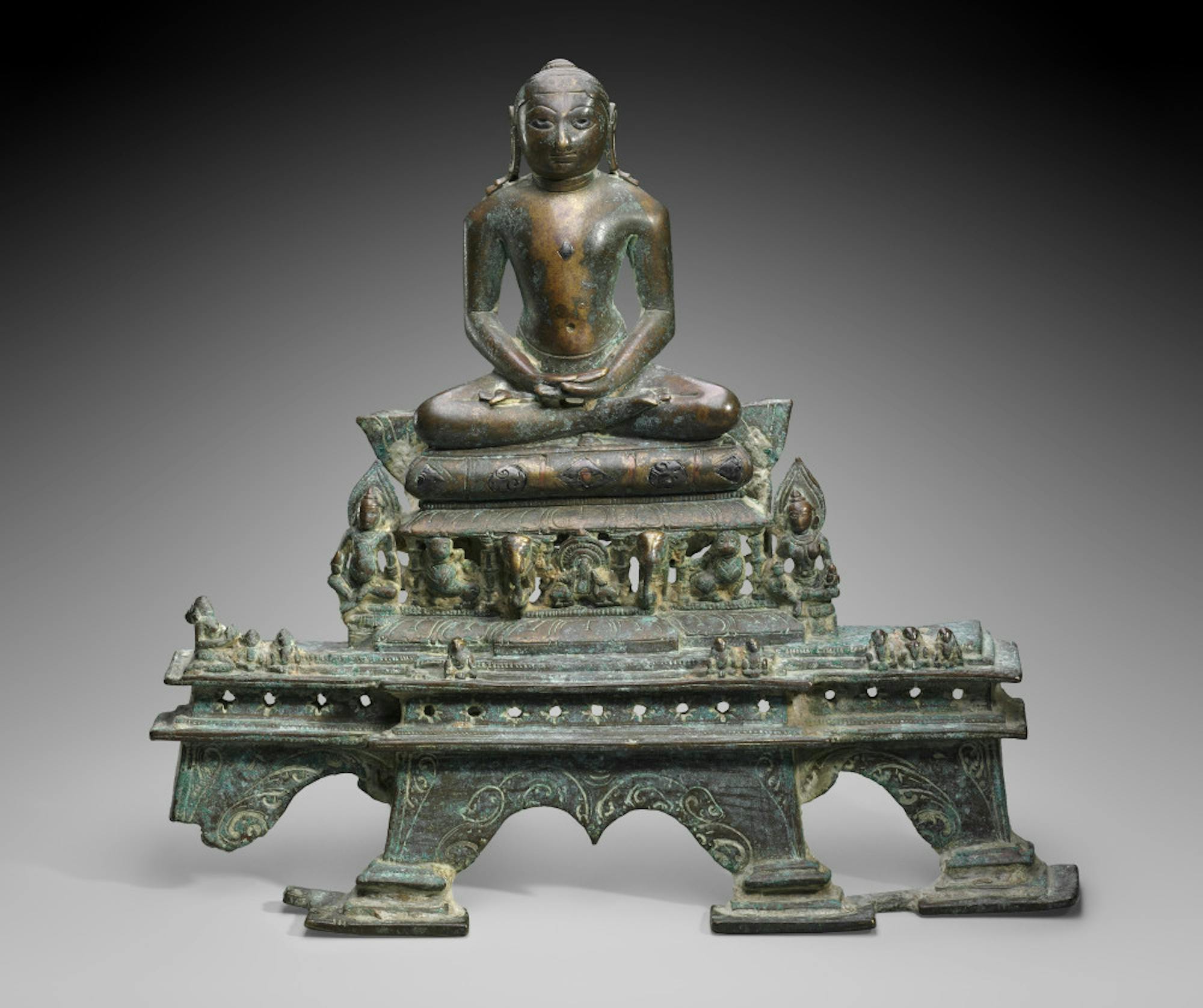From Aug. 9 to Nov. 30, Gallery 178 in the Asian Painting Gallery at the Museum of Fine Arts, Boston (MFA) was home to a selection of India’s most sacred paintings and manuscripts. The exhibition, "Pure Souls: The Jain Path to Perfection," brought together these works of art to represent Jainism, one of the world’s oldest religions. While the exhibition concluded on Sunday, the show successfully traced the Jain pursuit of enlightenment for its viewers during its four-month stay.
Originating in the sixth century B.C., the practice of Jainism is founded on a belief in a pattern of reincarnation. Its followers trust that their rebirth in the future hinges on good deeds in the present, and therefore they value non-violence, limited attachment to earthly possessions and diverse worldviews. For Jains, the only human beings who have been able to escape the cycle of rebirth are twenty-four Jinas -- teachers -- who have achieved enlightenment. The arrangement of pieces displayed in "Pure Souls" highlighted the pillars of the Jain faith and formed a complete understanding of a Jina’s passage through the world for the public.
To ensure that the exhibition accurately presented the Jain religion, MFA curator Laura Weinstein involved Phyllis Granoff, a professor of world religions from Yale University. Taking the public on a circular tour of the gallery space, the curators began with a wall text of didactic material to serve as an introduction to the basic principles of Jainism. Viewers could then travel clockwise around the room through the five "kalyanakas" or auspicious events in the lives of all Jinas: conception, birth, renunciation, enlightenment and liberation. Along the way, visitors encountered an array of striking manuscripts, paintings and objects, which have rarely been on view at the museum.
Spanning across centuries, many pieces featured in "Pure Souls" were paintings from manuscripts of the Kalpa Sutra. Early examples of these works were elaborate ink and watercolor depictions of religious scenes and writing on palm leaves. Today, it is uncommon for Jain manuscripts written on this medium to be found outside of India. Older manuscripts on display were even more intricate, and some illustrations used precious materials like gold.
While illustrated manuscripts were the focus of "Pure Souls," sculptures added a level of variation to the exposition. A bronze statue, two carved stone pillars and a large fragment of a seated Jina figure demonstrated a rich collection of religious symbols and artifacts, employed as a part of Jain worship.
Disappointingly, though "Pure Souls" guided viewers full-circle by representing a Jina’s path to enlightenment, it failed to connect the roots of this ancient religion to its present-day following. The introductory explanation of Jainism noted that today there are approximately five million adherents of the religion worldwide, while the rest of the exhibition did not attempt to show the ways in which these artworks related to contemporary practice. Clearly, a main objective of "Pure Souls" was to present the pieces for their aesthetic and historical value, but information on the current state of Jainism would have brought ancient art out of antiquity, making the already understated exhibition more engaging for the public.
Tucked away in a remote corner of the museum, "Pure Souls" may not have had the popular appeal of the current Goya or Jamie Wyeth exhibitions. The show’s use of its modest space and simple layout, however, echoed the emphasis on humility that characterizes the Jain religion. "Pure Souls" was a straightforward affair, but effective in teaching visitors about ancient Jain beliefs and painting tradition.
MFA exhibition, 'Pure Souls,' offers enlightenment about one of world's oldest religions

Sculptures, such as this one from the Marshall H. Gould Fund, were less prevalent in the show, but helped to explain the religious practices of Jainism.





